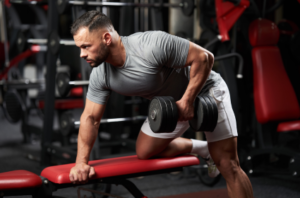Today’s society encourages living an unconventional and adventurous life; people increasingly look for ways to ditch traditional 9-5 work schedules to enjoy all that life can provide; one way of doing this is by joining the vanlife community.
Vanlife, or living out in a van as your primary living space, allows individuals to travel across America without being tied down to one location. Though some assume vanlife is only for wealthy individuals due to the cost of owning one of these expensive machines, building your campervan under $10,000 in 2024 is definitely possible!
Searching for an appropriate van is the first step in building a van on a budget. A reliable model must include strong engine performance, low mileage, and solid frame characteristics; this may make choosing one more expensive appear more tempting, but it is best to invest wisely for long-term investment purposes and choose wisely!
The conversion process begins once you’ve selected the ideal van for conversion. Planning out its layout before beginning will help maximize the use of space while providing both comfort and utility; some popular features of converted vans include beds, kitchenettes, and storage space.
Building your van on a budget requires creative solutions and resourcefulness, such as using recycled materials or secondhand appliances and doing all the conversion work to keep costs minimal. Many van life enthusiasts have discovered clever strategies for doing this through innovative uses for recycled items or second-hand purchases and DIY conversion work; these efforts all help bring costs down significantly!
Safety should always come first when building a van, meaning ensuring proper insulation and installing electrical and gas systems professionally. Furthermore, investing in high-quality tires and regularly servicing them will only add peace of mind for all involved in their creation.
At least, building your camper van for under $10,000 in 2024 is entirely achievable with careful planning and resourcefulness. You can transform an ordinary car into an accessible living space to explore our globalized world, so why not join the van life community and experience its freedoms firsthand?
(Learn From Videos Here)
My Van Building Journey:
To shed some light on this topic, I’ve built two vans. My first van was a complete DIY project that I did with my father in his driveway. I spent somewhere between $10,000 and $12,000, with some help from Dad. But for those watching, my apologies, Dad—you did chip in.
I lived in that van for two incredible years before deciding to sell it. After that, I went out on my next van, investing money and high-end components. I lived in it for about a year and am downsizing again. I’m excited to share my new rig with you soon. The point is that building a van for under $10,000 is absolutely possible, but there are some trade-offs to consider.
Set Your Priorities
Before you start building your van, setting your priorities and deciding what is essential for you is essential. Do you need ample storage space, a comfortable bed, or a kitchen? Making a list of your priorities will help you decide which components are necessary and where to allocate your budget. It’s also important to remember that you can always add and modify your van later.
Before you even think about your van’s layout and design, there are some crucial considerations. First, think about your workspace. Where are you going to build your van? Do you have access to a driveway, a backyard, or someone else’s space? Will you need to rent a workspace? Keep in mind that renting a workspace will add to your budget. Additionally, consider your living arrangements during the build. Are you staying at someone’s house or couch-surfing? These factors will influence your budget.
Look for a Used Van
Buying a used van is an excellent way to save money when building a van. However, it’s essential to choose a van that is mechanically sound and safe to drive. You can find used vans reasonably priced on Craigslist or Facebook Marketplace. It’s essential to research and inspect the van thoroughly before purchasing it.
The first step is finding the right van. Look for used cargo vans or passenger vans that are in good condition and fit within your budget. Popular options include the Ford Transit, Mercedes Sprinter, and Chevrolet Express. When selecting, consider factors such as mileage, maintenance history, and overall condition.
DIY is the Way to Go
If you’re looking to convert a van into a camper, you might be tempted to hire a professional to do the job for you. However, that could end up costing you a small fortune. By taking on the project yourself, you can save significant money and be satisfied knowing you did it alone.
One of the most significant advantages of a DIY van build is that you can choose exactly what you want. You have the freedom to choose your own design choices and preferences. You can customize your van to fit your specific needs and wants. This means that you can allocate your funds towards components that are most important to you, such as high-quality appliances, a comfortable bed, or a spacious kitchen.
When you build your van yourself, you’ll also gain valuable knowledge and skills. Even if you have limited experience with DIY projects, you’ll find that many aspects of van conversion are surprisingly easy to learn. With some basic tools and research, you can tackle tasks like installing insulation, building a bed frame, or constructing kitchen cabinets.
Of course, doing a DIY van build isn’t for everyone. It requires time, effort, and a willingness to learn. However, if you’re up for the challenge, the rewards can be well worth it. Not only will you save money, but you’ll also have a unique and personalized space that you can call your own. So why not give it a try? With patience and determination, you might just surprise yourself with your capabilities.
Salvage or Repurpose Materials
When converting a van into a livable space, there are many ways to save money and reduce waste. One of the most effective methods is salvaging or repurposing materials. You can create a unique and personalized van without breaking the bank or contributing to unnecessary waste using discarded or unused items.
One of the most versatile materials for van conversion is wood. Wooden pallets, for example, can be found for free or cheaply and used to build a bed or furniture. With creativity, you can transform pallets into a comfortable and stylish sleeping area that suits your needs.
Additionally, old cabinets or doors can be repurposed as storage solutions or as a base for your kitchen cabinets. By using salvaged materials, not only do you save money, but you also contribute to a more sustainable lifestyle.
Another way to repurpose materials is to use items that you already own. If you have camping gear or outdoor equipment, such as a tent or sleeping bag, you can use these items in your van conversion. This saves money and reduces the need to buy waste or unnecessary new products.
When it comes to van conversions, the possibilities are endless. You can turn discarded or unused materials into a comfortable and functional living space with creativity and resourcefulness. Salvaging or repurposing materials is not only a cost-effective solution but also an environmentally conscious one. So, consider incorporating salvaged or repurposed materials into your design next time you consider a van conversion.
Use Solar Power
One of the most significant advantages of using a solar panel system to power your van is that it is an environmentally friendly option. Solar power significantly reduces your carbon footprint and contributes to a healthier planet. This is particularly important for those who want to live off-grid and enjoy the freedom of traveling while minimizing their environmental impact.

With a solar panel system installed in your van, you can power all your appliances, lights, and devices without relying on a traditional power source. This means that you can enjoy all the comforts of home, no matter where you are. Whether you want to cook a hot meal, charge your phone, or watch a movie, a solar panel system provides a reliable and sustainable power source.
While the initial investment for a solar panel system can be high, it is a long-term investment that will pay off in the long run. Once installed, solar panels require very little maintenance and can last up to 25 years or more. This means you can enjoy solar power’s benefits for many years without worrying about replacing or repairing your system.
Another advantage of using a solar panel system to power your van is that it gives you the ultimate freedom to travel wherever you want without worrying about finding a power source. Whether camping in the middle of the wilderness or traveling across the country, you can rest assured that you’ll always have a reliable power source to keep you connected and comfortable.
A solar panel system is an excellent option if you’re looking for a sustainable and reliable way to power your van. It is environmentally friendly and allows you to travel wherever you want without relying on traditional power sources. While the initial investment may be high, the long-term benefits of a solar panel system make it a worthwhile investment for any homeowner.
Tools and Equipment:
When it comes to building a van, having the right tools and equipment is absolutely essential. Without them, you’ll find completing even the most basic tasks challenging and may spend more money and time than you anticipated. So, let’s talk about the different tools and equipment you’ll need to get started.
First and foremost, you’ll need a good set of saws. Depending on your work, you may need a circular saw, a jigsaw, a handsaw, or even a miter saw. Each saw has unique strengths and weaknesses, so choosing the right one for the job is essential. Additionally, you’ll need a good set of blades for each saw and a way to sharpen them as needed.

Next up, you’ll need a drill. This is another essential tool for building a van, as it will allow you to drill holes for screws and other fasteners, as well as make cuts with hole saws and other attachments. Again, many different types of drills are available, from cordless models to heavy-duty industrial drills. Your choice will depend on your budget and how often you use it.
In addition to saws and drills, you’ll need to consider many other tools and equipment. For example, you’ll need good screwdrivers, wrenches, pliers, wire cutters, and other hand tools. You’ll also need clamps and vices to hold pieces in place while you work on them and sanders and grinders to smooth out rough edges and surfaces.
Of course, these tools and equipment can be expensive, especially if you opt for higher-end brands like Milwaukee or Makita. However, more budget-friendly options like Ryobi and Black & Decker are available. Just be sure to choose reliable and durable tools, as you don’t want to replace them halfway through your project.
In addition to the tools themselves, you’ll also need to invest in supplies like screws, glue, and other miscellaneous items. These can add up quickly, so it’s important to budget accordingly. However, with the right tools and supplies, you’ll be well on your way to building the van of your dreams.
Heating and Electrical Systems:
Next, we’ll discuss heating and electrical systems, which can be significant expenses in your van build. If you’re on a tight budget and comfortable with propane, a portable propane heater like the Mr. Buddy is economical. Just remember to vent it properly to prevent carbon monoxide issues.
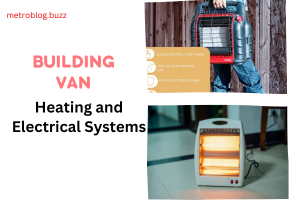
On the other hand, if you prefer electric heating, you’ll need a larger battery bank, which may require lithium batteries to make the most of your power storage. Lithium batteries are pricier but provide better performance and more energy than traditional options.
Portable Power Stations:
Portable power stations are an excellent option if you are looking for a reliable and efficient way to power your van’s appliances. These units are designed to provide a cost-effective electrical solution that is both convenient and versatile.
Portable power stations come equipped with built-in inverters, allowing you to convert DC power into AC power that can run your appliances. This means you can easily power your refrigerator, lights, and other devices without relying on external sources.
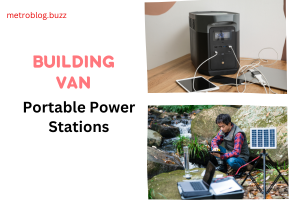
One of the main advantages of portable power stations is that they can be charged via solar panels. This makes them an environmentally-friendly option that can help you save money on electricity bills in the long run. Additionally, solar panels are easy to install and require minimal maintenance, making them a hassle-free option for van owners.
Portable power stations are available in different sizes and capacities to suit your needs. If you plan on living in your van for an extended period, you may want to consider a larger unit that can provide more power. However, even smaller models can be sufficient for most van dwellers.
Regarding cost, portable power stations are priced between $1,200 and $2,000, which is a reasonable investment considering their benefits. With a portable power station, you can enjoy the freedom and independence of living off the grid without sacrificing the comforts of modern living.
If you are looking for a reliable and budget-friendly way to power your van’s appliances, portable power stations are an excellent choice. With their built-in inverters and solar charging capabilities, these units offer a versatile, eco-friendly solution to enhance your van’s life experience.
Hot Water:
If you want hot water in your van, there are a few options to consider. You can go for a dedicated hot water system, like the Bosch tank, which requires electricity. Alternatively, you can opt for a propane solution, venting it carefully to ensure safety. A budget-friendly choice for hot water is a portable camp shower that can be heated using a propane tank.
Cabinetry and finishes:
When converting a van into a livable space, the interior design is just as important as the mechanical aspects. The cabinetry, materials, and finishes are essential for functionality and crucial in creating an inviting and comfortable living space.
The first step in designing the interior of your van is to decide on the type of cabinetry you want. If you’re handy with woodworking tools, you can easily DIY your cabinetry using plywood and various woodworking techniques. This not only allows you to customize the design of your cabinetry but also helps you save money.
When it comes to materials, choosing cost-effective options like shiplap for wall coverings or quarter-inch maple plywood with a coat of paint can help keep your budget in check. Shiplap is a popular choice for van conversions as it is inexpensive, easy to install, and adds a rustic charm to the interior. On the other hand, maple plywood is a durable and versatile option that can be painted to match your desired color scheme.
While choosing the materials and finishes for your van conversion, it’s important to consider each element’s durability and functionality. The interior of a van is susceptible to wear and tear, so it’s essential to use materials that can withstand the rigors of daily use. Additionally, the finishes you choose should be easy to clean and maintain, as you’ll live in a small space with limited access to cleaning supplies.
Regarding budget, a ballpark estimate of $5,000 to $7,000 for wood and materials should suffice. However, this can vary depending on the size of your van and the complexity of your design. It’s always a good idea to do your research and get quotes from different suppliers before starting the conversion process.
In conclusion, the cabinetry, materials, and finishes are crucial elements in designing a functional and aesthetically pleasing interior for your van conversion. By choosing cost-effective options and keeping durability and functionality in mind, you can create a beautiful and comfortable living space on a budget.
Insulation:
Proper insulation is crucial for maintaining a comfortable temperature in your van. Consider using rigid foam board for the floor and walls, along with thermal breaks, to prevent condensation. Adding furring strips helps create an even surface for attaching the wall and ceiling finishes. Additionally, consider using natural insulators like wool or Thinsulate for improved insulation performance.
Plumbing:
Simplifying your plumbing system can help you save money. A straightforward setup can consist of two 5-gallon jerry cans for fresh and grey water, using a hand pump to supply water to your sink. By keeping your plumbing system minimal, you can stay within your budget without compromising functionality.
Building a van for under $10,000 is feasible but requires thoughtful planning and resourcefulness. While this budget-conscious approach may not encompass all the luxuries one might desire, it can offer the essentials for a comfortable van life experience. Choosing between a cost-effective build and a more lavish one ultimately hinges on your preferences, budget, and willingness to make trade-offs.
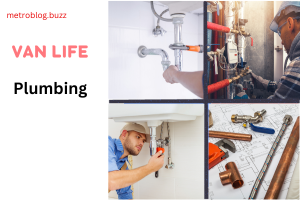
Van life is about personalization, allowing you to tailor your journey to your unique vision. So, whether you embark on an economical build or invest more for additional features, remember that your chosen path is as significant as the destination. Best of luck with your van build, and may your van life adventures be filled with joy and unforgettable experiences!
Designing Your Layout and Floor Plan
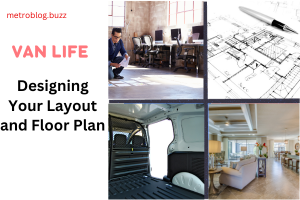
Once you have your van, it’s time to design the layout and floor plan to maximize space and functionality. Consider your needs and lifestyle to determine the essential components of your camper van. Think about the following:
- Sleeping arrangements: Will you opt for a fixed bed or a convertible sleeping area?
- Kitchen setup: Do you need a stovetop, sink, refrigerator, or storage for cooking utensils?
- Bathroom facilities: Will you include a portable toilet or a composting toilet?
- Storage solutions: Plan adequate storage for clothes, gear, and supplies.
- Other amenities: Consider additional features such as solar panels, electrical systems, and entertainment options.
Insulation, Flooring, and Wall Paneling
To ensure comfort in your camper van, proper insulation is crucial. Insulate the walls, floor, and ceiling to regulate temperature and reduce noise. Use insulation materials such as foam board, spray foam, or wool insulation. After insulating, install the flooring you choose, whether laminate, vinyl, or hardwood.
Next, choose wall paneling materials that are lightweight, durable, and aesthetically pleasing. Options include plywood, beadboard, or waterproof wall panels. Consider adding a vapor barrier to prevent condensation and moisture buildup.
Kitchen and Cooking Area
Designing a functional kitchen area is crucial for comfortable living on the road. Choose appliances that suit your cooking needs, depending on your budget and preferences. Consider installing a compact stove or cooktop, a sink with a water system, and a small refrigerator or cooler.
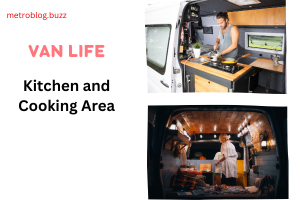
Maximize storage space by incorporating cabinets, drawers, and shelves for cookware, utensils, and pantry items. Utilize clever storage solutions such as magnetic spice racks, hanging baskets, and foldable shelves to optimize space.
Bed and Sleeping Area
Creating a comfortable sleeping area is essential for a restful night’s sleep in your camper van. Decide whether you prefer a fixed or convertible bed that can transform into seating during the day.
Choose a high-quality mattress or foam to ensure comfort. Consider utilizing under-bed storage for clothing, bedding, or other belongings.
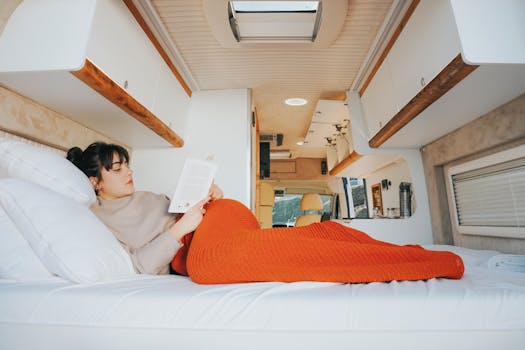
Choosing the Right Bed Design
When it comes to bed design, there are numerous options, each with its pros and cons. One popular choice is the fixed bed, offering storage underneath but more suitable for larger vans. Another option is the bed and table combo, great for socializing and sleeping but better for medium to larger vehicles. For smaller vans like ours, we find the slide-out bed to be the most versatile and easy to customize.
Building the Base of the Bed
To start, you need a sturdy base for your bed. We opted for a slide-out design, incorporating a Van Vault slider. This slider, with heavy-duty runners, not only serves as a drawer system but also adds security. You can build a similar structure if the slider option doesn’t suit you. We’ll guide you through the steps to turn a simple structure into a slide-out double bed.
Cladding the Van Vault Slider
Measuring and cutting plywood to cover the slider and accommodate electrical components is the next step. We cut slots for air vents, fixed the plywood with screws and adhesive, and created a lid for easy access to the electrical area. This ensures a neat and functional base for the bed.
Creating a Template for the Bed
Crafting a template for the bed is crucial, especially when dealing with curved walls. We show you how to transfer the template to plywood, cut the shape with a jigsaw, and create an opening for accessing the electrics. The lid is secured with plywood lips and a combination of super glue and wood glue.
Space Maximization – Shoe Storage and Hidden Compartments
Utilizing every inch of space, we added shoe storage by boxing in an unused section. We also created a hidden compartment near the wheel well for storing smaller items like wallets and keys. These clever additions optimize space while maintaining a tidy interior.
Sliding Bed Structure and Mechanism
Installing a sliding bed structure involves attaching a support piece and a sliding baton. We ensure the sliding mechanism works smoothly by adding a plywood lip and a spacer to the opposite side. This ensures the sliding bed functions seamlessly.
Making The Sliding Bed
Constructing the sliding bed involves a series of slats fixed on one side and sliding on the other. We provide a detailed explanation of how to assemble these slats, ensuring even spacing and utilizing a drilling jig for precise screw placement. The sliding bed is versatile, converting easily from a single bed to a double bed or corner sofa.
Boxing in the Sliding Legs
To complete the bed, we box in the sliding legs for added rigidity and a polished appearance. Handles in the plywood make sliding out each section a breeze. The result is a multifunctional bed that serves as a single bed, double bed, corner sofa, outdoor kitchen area, and a secure storage box for valuables.
Water System and Bathroom Facilities
Having access to water is a necessity when living in a camper van. Install a water system with a freshwater tank, a hand pump or faucet, and a gray water tank for waste disposal. Consider using collapsible water containers for additional storage.
If you require bathroom facilities, some options can fit within your budget. A portable toilet or a DIY composting toilet can be cost-effective alternatives to traditional RV toilets. Ensure proper ventilation and waste management for a hygienic and odor-free experience.
Storage and Organization
Efficient storage and organization solutions are essential to maximizing your living space. Utilize overhead cabinets, under-bed storage, and hanging organizers to keep your belongings tidy and easily accessible.
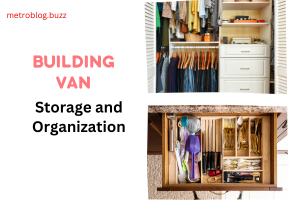
Consider using hooks, bungee cords, or netting to secure items during travel. Use labeled bins or baskets to categorize and store smaller items. Utilize vertical space by installing shelves or utilizing the walls for additional storage.
Disclaimer: Prices mentioned in this article are based on the reference articles and may vary depending on location, availability, and individual preferences.
YouTube Top Videos To Learn How to Build a van for under $10,000
1:
2:
3:
4:



